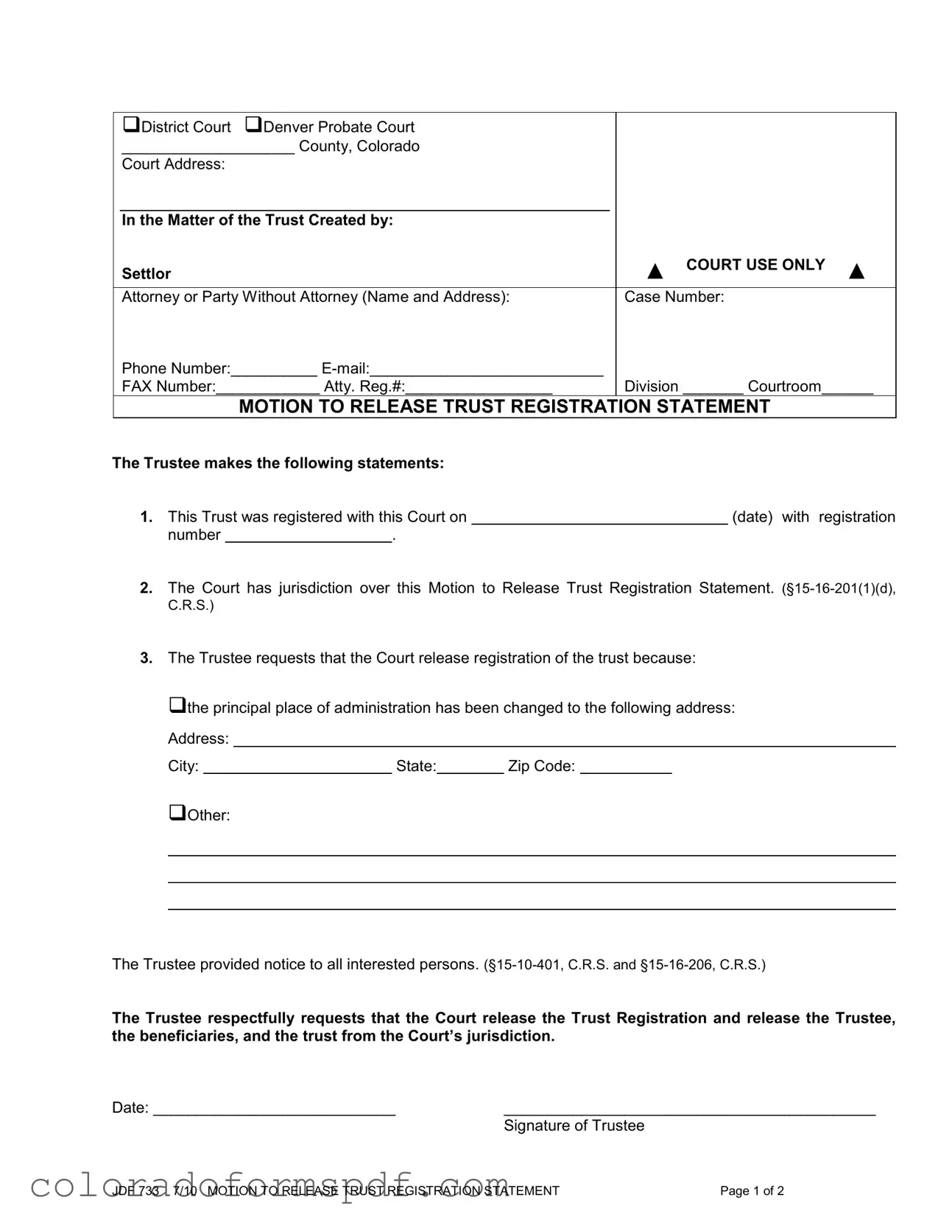The JDF 733 form plays a crucial role in the process of managing trusts in Colorado, particularly when it comes to releasing a trust registration statement. Designed for use in District Courts and the Denver Probate Court, this form allows trustees to formally request the release of a trust's registration, which is essential when the principal place of administration changes or for other specified reasons. The form requires the trustee to provide important details, including the original registration date, registration number, and the new address if applicable. It also emphasizes the need for the trustee to notify all interested parties, ensuring transparency throughout the process. By completing the JDF 733, trustees can seek to free themselves, the beneficiaries, and the trust from the court's jurisdiction, marking a significant step in the trust administration journey. This form not only streamlines legal proceedings but also safeguards the interests of all parties involved, making it a vital tool in trust management.
